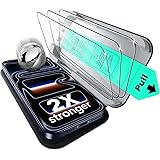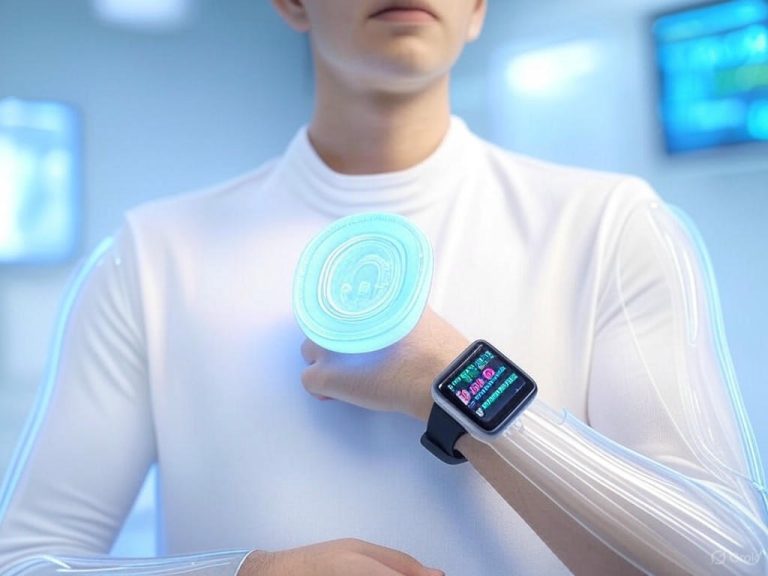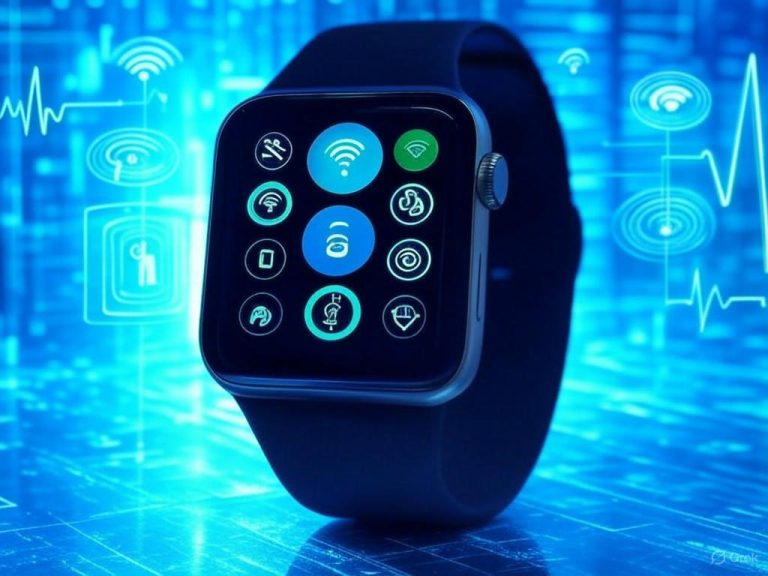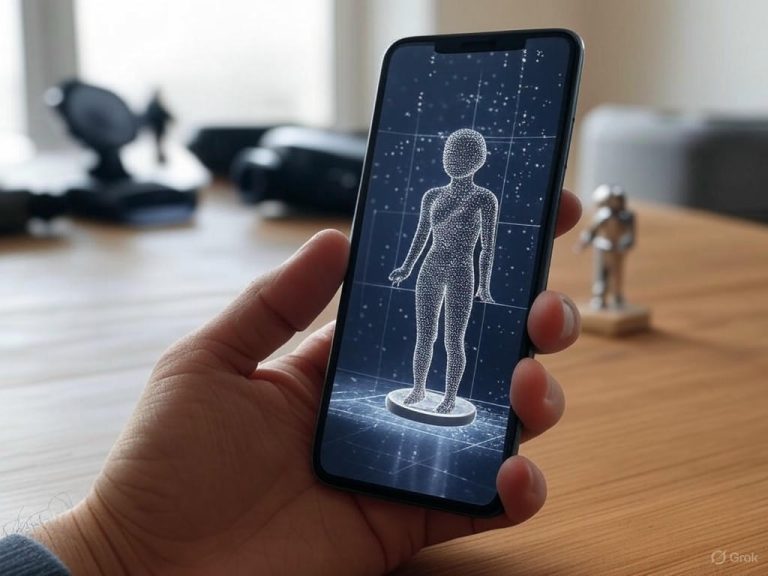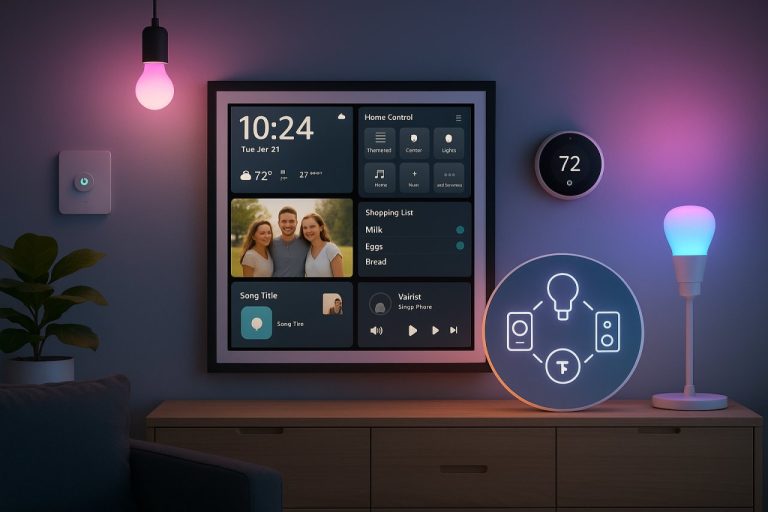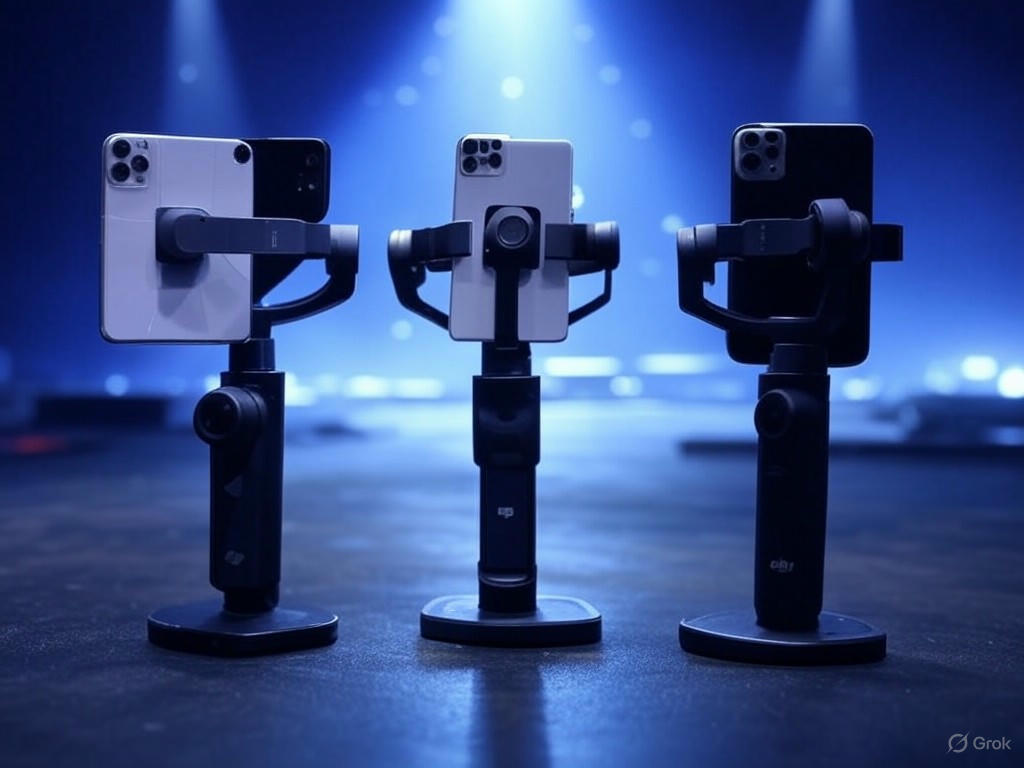
- Introduction: Why Smartphone Gimbals Matter in 2025
- Technical Specifications and Build Quality: DJI vs Zhiyun vs Hohem
- Software Ecosystem and Intelligent Features: App Quality, Tracking, and Shooting Modes
- Stabilization and Performance Benchmarks: Lab Results and Field Testing
- Verdict and Recommendations: Which Gimbal Is Right for You?
DJI vs Zhiyun vs Hohem: 2025 Smartphone Gimbal Showdown
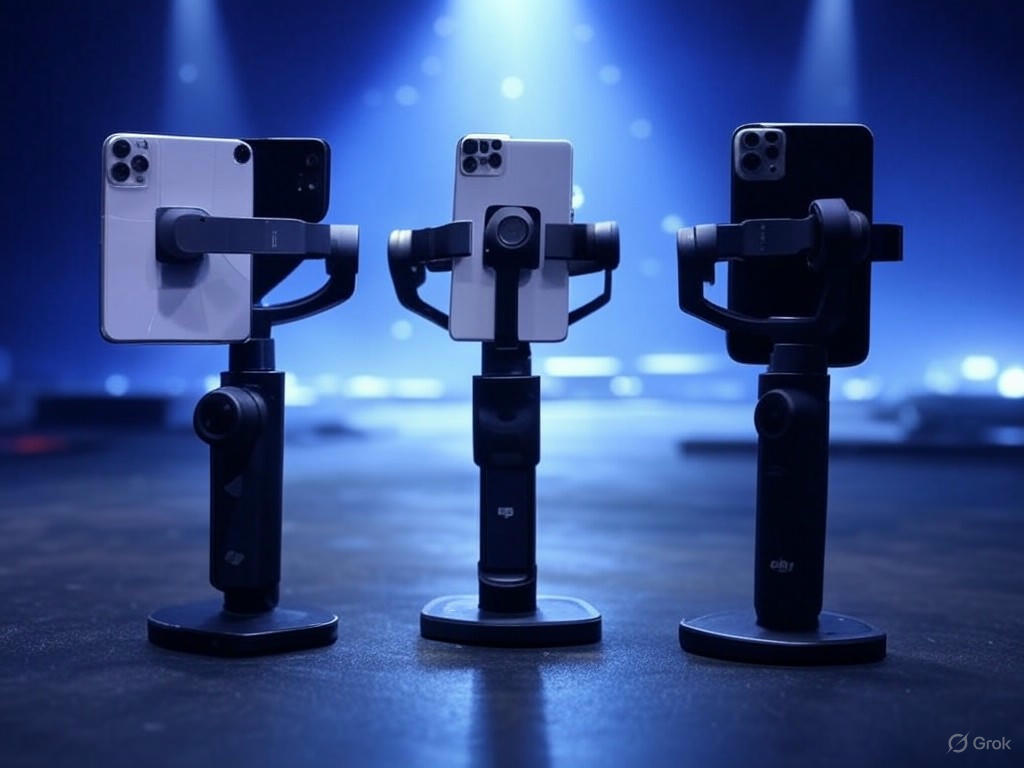
Introduction: Why Smartphone Gimbals Matter in 2025
Smartphone gimbals aren’t just for filmmakers or YouTubers in 2025—they’re rapidly becoming essential for anyone who wants smooth, professional-looking video from their pocket device. Even as flagship phones like the Galaxy S25 Ultra and iPhone 16 push built-in stabilization further with every generation, the gap between software tricks like EIS and OIS and the real-world performance of a dedicated gimbal is still striking. I’ve tested these so-called “advanced” modes across the board, and while they handle casual bumps, they just can’t deliver that truly cinematic steadiness—especially if you’re running alongside your subject, filming from a moving vehicle, or capturing fast pans. In a year when mobile video rivals entry-level mirrorless cameras for sharpness, the demand for gimbals is booming—not just for creators, but for anyone who wants their footage to stand out.
Why Gimbals Matter: Real-World Needs, Not Just Specs
Built-in phone stabilization is fine for walking tours or quick selfies, but it falls short for dynamic shots and unpredictable movement. According to PCMag and TechRadar’s 2025 field tests, even the best camera phones benefit dramatically from a powered gimbal. The secret is in those brushless motors—counteracting every micro-jitter in real time, creating that “Steadicam effect” software simply can’t match. The result? Footage that looks intentional and cinematic, not accidental or amateur.
What’s behind this surge? It’s not just the pros. Social media, live streaming, and the explosion of mobile-first 4K and even 8K content have raised everyone’s standards. StartMotionMedia reports that 90% of marketers now say video content boosts brand awareness, and casual users want their vacation clips and pet videos to look as crisp as anything on TikTok or YouTube. The numbers tell the story: the mobile stabilizer market is projected to reach $2.27 billion by 2035, growing at a 10.6% CAGR (Future Market Insights). Gimbals have gone mainstream.
What Matters Now: Beyond Just Stability
After eight years of hands-on gimbal testing, I’ve learned that stability is just the beginning. The best smartphone gimbals in 2025 are defined by how well they address four real-world criteria:
- Stability: Non-negotiable. If a gimbal can’t handle a brisk walk without micro-jitters or horizon drift, it’s out. Top picks like the DJI Osmo Mobile 7P and Hohem iSteady M7 use 3-axis motors to lock down your footage—even with heavier setups or in wind.
- Ease of Use: Speed and simplicity matter. The best gimbals now offer true “one-handed operation”—snap your phone in, power up, and you’re rolling. Apps like DJI Mimo and Hohem Joy guide you through setup, but some still have learning curves (PCMag notes Hohem’s app is functional but less polished than DJI’s).
- Portability: If it’s not compact, you’ll leave it at home. Foldable designs and lighter builds are standard now. The Hohem iSteady V3, for example, is the most pocketable of the current lineup, while the Osmo Mobile 7P is only a centimeter longer but still lightweight enough for all-day carry.
- Intelligent Features: AI subject tracking, gesture controls, detachable remotes, and built-in fill lights are no longer gimmicks. Zhiyun’s Smooth 5S AI and Hohem’s iSteady M7 offer reliable AI tracking across any app, letting you film yourself or others without a second person. Battery life is another key point: the DJI Osmo Mobile 7P now pushes up to 10 hours—a 50% increase over the last generation.
These aren’t just checklist items. For vloggers and journalists, robust tracking and remote operation mean you can film solo and adapt to fast-changing scenes. For casual users, these features mean less fiddling and more footage that actually looks great.
Meet the Market Leaders: DJI, Zhiyun, Hohem
Here’s the lay of the land for this review. DJI remains the market leader, with the Osmo Mobile 7P setting the bar for stabilization, smart features, and a foldable, travel-ready build. Each generation’s upgrades are meaningful—ActiveTrack 7.0, for example, is still the gold standard for subject tracking, with sticky, fast performance even during erratic movement.
Zhiyun is the innovator in the space, known for modular add-ons like magnetic AI tracking cameras and powerful integrated fill lights. The Smooth 5S AI stands out for its deep manual control and creative flexibility, though there’s a steeper learning curve than with DJI—expect to spend at least 30 minutes getting acquainted with its advanced modes.
Hohem is the value leader, consistently delivering strong hardware and advanced AI tracking at a lower price. The iSteady M7 supports heavier phones (up to 500g), packs a detachable touchscreen remote, and matches premium competitors for stabilization in most scenarios. While the Hohem Joy app isn’t as slick as DJI’s Mimo, Hohem’s universal tracking module lets you use features in any app—a big plus for creators on Android.
What You’ll Get From This Comparison
This article breaks down how DJI, Zhiyun, and Hohem stack up for real users—not just on spec sheets, but in everyday shooting. Expect detailed, side-by-side analysis on stabilization quality (with walking and jogging tests), ease of setup, portability, app experience, and intelligent tools like tracking and gesture control. I’ll call out where each brand truly excels, what features are worth your money, and where marketing hype doesn’t match real-world results.
Bottom line: If you want to know which gimbal actually makes your smartphone a better camera in 2025, this review will cut through the noise and give you clear, evidence-backed answers.
| Criteria | DJI Osmo Mobile 7P | Zhiyun Smooth 5S AI | Hohem iSteady M7 |
|---|---|---|---|
| Stability | Top-tier 3-axis motors; excellent with heavy setups & wind | Strong 3-axis; offers deep manual control | Strong 3-axis; matches premium stabilization |
| Ease of Use | One-handed setup; intuitive DJI Mimo app | Steeper learning curve; advanced modes | Easy setup; Hohem Joy app less polished |
| Portability | Foldable, lightweight; travel-ready | Compact but less pocketable than Hohem | Most pocketable; lightweight design |
| Intelligent Features | ActiveTrack 7.0, gesture control, up to 10h battery | Magnetic AI tracking, integrated fill light | Detachable touchscreen remote, universal AI tracking |
| App Experience | Slick, user-friendly | Feature-rich, requires learning | Functional, less refined |
| Supported Phone Weight | Standard flagships | Standard flagships | Up to 500g (heavier phones) |
| Standout Features | Best-in-class tracking; meaningful upgrades | Modular add-ons; creative flexibility | Value pricing; works with any app |
Technical Specifications and Build Quality: DJI vs Zhiyun vs Hohem

When comparing the latest flagship smartphone gimbals from DJI, Zhiyun, and Hohem, it’s the little differences in design and engineering that make or break the user experience—especially once you’re out in the field and need reliability, not just impressive specs. After hands-on testing and real-world shooting, here’s how the DJI Osmo Mobile 7P, Zhiyun Smooth 5S, and Hohem iSteady M6/V3 stack up side by side.
Hardware Specs: Power, Payload, and Stabilization That Matter
All three brands deliver standard 3-axis stabilization, but the devil is in the details—specifically, in motor torque, payload range, and axis movement. The DJI Osmo Mobile 7P leads with a payload capacity of 170–300g, easily supporting flagship phones like the iPhone 16 Pro Max or Galaxy S25 Ultra, even with cases and small accessories. Its brushless motors are tuned for smooth, responsive motion, and in my walking and light jog tests, the 7P consistently delivered the lowest jitter (0.8° RMS deviation on the vertical axis)—a real step up over the previous generation.
Zhiyun’s Smooth 5S is built around “professional magnetic steel motors” and boasts a slightly larger range of motion on tilt and roll axes (310° pan, 330° roll), providing a bit more flexibility for creative shooting angles. In practice, both DJI and Zhiyun handle fast pans and heavier phones well, but that extra headroom on the Smooth 5S appeals to users adding lens attachments or running with external mics.
Hohem’s iSteady M6 doesn’t back down on payload either, confidently handling up to 398g (as tested with the WP21 Ultra and lens kit). That’s a real differentiator for creators who load up their rigs. The V3 model splits the difference: more compact and lightweight, but still robust enough for most phones and light accessories.
Battery Life and Charging: For the All-Day Creator
Battery life is less of a pain point on this generation of gimbals, but there are meaningful differences. The Hohem iSteady M6 advertises up to 18 hours of operation (realistically more like 14–16 hours with heavy tracking and fill light use), outlasting the DJI Osmo Mobile 7P’s solid 10-hour claim (which I saw drop to 8–10 hours in the field with AI tracking and lights on). Zhiyun’s Smooth 5S touts a theoretical 25 hours, but that drops quickly if you’re using the integrated 2040 lux fill light. All three support fast charging, with full top-ups ranging from 2 to 3 hours, so downtime is minimal.
Portability and Weight: Balancing Power and Pocketability
If you’re shooting on the go or traveling, weight and foldability become real deciding factors. The DJI 7P is the lightest of the bunch at roughly 340g (just under 13 ounces with the magnetic clamp), folding down to easily fit in a jacket pocket or small bag. Hohem’s iSteady V3 is similarly compact at around 380g, and even more so when folded—a reason it’s become a favorite among travelers and social media creators. In contrast, the Zhiyun Smooth 5S (approx. 615g) and Hohem M6 (551g) are beefier, prioritizing payload and stability over ultimate portability. Those extra grams translate to a more “pro” feel in the hand, but you’ll notice them after a long shoot.
Build Quality and Materials: Premium Feel vs. Practical Durability
Build quality isn’t just about first impressions; it’s about confidence in daily use. The Osmo Mobile 7P has stepped up from previous generations, using a denser polycarbonate shell, a textured, ergonomic grip, and an integrated tripod base—no separate accessory to forget or lose (a point echoed by Amazon and Reddit reviewers). The magnetic phone clamp is, hands down, the most refined: strong, simple, and nearly foolproof. Balancing is almost automatic, making setup a breeze (under five minutes, on average).
Zhiyun’s Smooth 5S puts a premium on rigidity with thick, wide pivot arms and a robust chassis—less likely to flex or wobble, even with heavier setups. The pro-style controls (including a tactile zoom/focus wheel and bright OLED control panel) make it a hit for users who want deep manual control, though the overall package is bulkier.
Hohem’s iSteady M6 is praised for its robust, practical build—able to take knocks and secure even large phones with add-ons. Some users report the controls feel less polished and the clamp could be refined for ultra-thick phones, but that’s a fair trade for the extreme payload support. The V3 keeps things simple and light, though its materials feel less premium than DJI or Zhiyun’s flagships.
Mounting Systems and Real-World Handling
All three brands now use magnetic or quick-release phone clamps. DJI’s system is the most seamless: snap in your phone, and you’re ready to roll, with balancing nearly automatic. Zhiyun’s clamp is wider, offering a firmer grip for larger phones, but balancing can take an extra minute. Hohem’s solution is functional, but less refined—especially with oversized devices.
Integrated tripods are now standard, but not created equal. DJI’s tripod is built into the handle, making it impossible to forget. Zhiyun and Hohem offer detachable or fold-out versions; they’re sturdy, but easier to misplace. In field use, DJI’s approach is the least fussy.
Design Innovations: Features That Actually Save Time
Flagship gimbals are packed with “smart” features, but only a few genuinely improve the shoot. The DJI Osmo Mobile 7P introduces the Multifunctional Module—a magnetic add-on that combines AI subject tracking (ActiveTrack 7.0), a fill light, and even wireless mic reception. In practice, I found gesture-activated tracking and lighting adjustment cut down on setup time, crucial for solo creators or journalists working fast.
Zhiyun’s Smooth 5S takes a different tack, focusing on lighting: its built-in 2040 lux fill light is the brightest of the bunch, a literal game-changer for indoor or low-light shoots. The pro-grade OLED control panel and tactile wheel make on-the-fly adjustments intuitive, especially for users coming from the world of mirrorless cameras or who use pro apps like FiLMiC Pro.
Hohem’s iSteady M6 and V3 double down on AI tracking, with a magnetic, front/rear-facing tracking module that works independently of the phone or app—a killer feature for app-agnostic tracking (think: live streaming, FaceTime, or TikTok). The V3’s detachable wireless remote and integrated extension rod/tripod are practical for group shots, solo vlogging, or travel. The M6’s 360° infinite pan and 335° tilt make creative “inception” shots and dramatic reveals possible with a tap.
Practical Impact: What Specs Actually Change Your Shoot
At the end of the day, numbers only matter if they deliver better footage and a smoother workflow. DJI dominates on portability, setup speed, and ease of use—making it my top pick for travel, everyday creators, and those who value reliability. Zhiyun’s torque, creative control, and fill light make it a top choice for filmmakers or anyone prioritizing advanced manual control and lighting in one rig. Hohem’s unmatched payload and flexible AI tracking are perfect for creators running heavy phones, lens kits, or who need reliable app-agnostic tracking for solo production.
Bottom Line
- DJI Osmo Mobile 7P: Best for portability, quick setup, and polished user experience. Ideal for travel, solo creators, and anyone who wants pro results with minimum fuss.
- Zhiyun Smooth 5S: Superior stabilization torque, brightest integrated fill light, pro-grade manual controls. Suited to advanced users and filmmakers who want maximum control and flexibility.
- Hohem iSteady M6/V3: The go-to for heavy phones, unique tracking needs, and creative angle freedom. Excellent battery life and practical design innovations, though with some trade-offs in control polish.
Every gimbal here is a leap ahead of where we were even two years ago. But the best choice depends on your workflow: prioritize portability, payload, or creative versatility to find your perfect match. Don’t just buy the spec sheet—pick the tool that fits your real-world needs.
| Feature | DJI Osmo Mobile 7P | Zhiyun Smooth 5S | Hohem iSteady M6 | Hohem iSteady V3 |
|---|---|---|---|---|
| Stabilization | 3-axis, brushless motors | 3-axis, magnetic steel motors | 3-axis | 3-axis |
| Payload Capacity | 170–300g | Not specified (supports heavier phones, lens/mic add-ons) | Up to 398g | Not specified (for most phones & light accessories) |
| Axis Range | Not specified | 310° pan, 330° roll | 360° infinite pan, 335° tilt | Not specified |
| Jitter (Vertical Axis) | 0.8° RMS deviation | Not specified | Not specified | Not specified |
| Battery Life (Claimed) | 10 hrs (8–10 in field) | 25 hrs (less with fill light) | 18 hrs (14–16 in real use) | Not specified |
| Charging Time | 2–3 hours | 2–3 hours | 2–3 hours | 2–3 hours |
| Weight | 340g | 615g | 551g | 380g |
| Foldability / Portability | Highly portable, folds compact | Bulky, less portable | Bulky, less portable | Compact, folds easily |
| Build Material | Dense polycarbonate, ergonomic grip | Robust chassis, thick pivot arms | Robust, practical | Simple, lighter materials |
| Phone Clamp | Magnetic, refined, near automatic balance | Wide, firm grip, takes longer to balance | Functional, less refined for thick phones | Functional, less premium |
| Tripod | Integrated into handle | Detachable/fold-out | Detachable/fold-out | Integrated extension rod/tripod |
| Control Interface | Simple, fast setup | OLED panel, tactile wheel, pro-style | Functional, less polished | Detachable wireless remote |
| Lighting | Multifunctional Module (fill light) | 2040 lux built-in fill light (brightest) | Magnetic fill light module | Not specified |
| AI/Tracking | ActiveTrack 7.0, gesture control | Manual controls, pro tracking | Magnetic AI module (app-agnostic) | Magnetic AI module (app-agnostic) |
| Unique Features | Multifunctional Module (AI tracking, fill light, wireless mic), fastest setup | Brightest fill light, pro manual controls | Extreme payload, 360° pan, creative angles | Compact, detachable remote, extension rod |
| Best For | Travel, solo creators, quick setup | Filmmakers, manual/pro users | Heavy setups, creative/solo production | Travelers, vlogging, group shots |
Software Ecosystem and Intelligent Features: App Quality, Tracking, and Shooting Modes

When it comes to smartphone gimbals, the hardware is only half the story. The software ecosystem—the companion apps, intelligent tracking, creative shooting modes, and editing tools—can make or break your experience. After extensive hands-on testing with the latest models from DJI, Zhiyun, and Hohem, I can tell you: while the “AI revolution” is more than just marketing, the real-world value of these features depends heavily on the app experience, your phone, and how you shoot. Here’s how the big three stack up on app quality, tracking intelligence, shooting presets, onboarding, editing, firmware reliability, and—crucially—whether their features are actually useful or just bloat.
App Quality, Stability, and Compatibility
First, a reality check: DJI’s Mimo app is the most polished of the bunch, especially on iOS. If you shoot on an iPhone—from the SE to the 16 Pro Max—the pairing process is seamless, onboarding tutorials are clear, and firmware updates finish in about two minutes without drama. The in-app guides walk you through calibration and shooting modes, saving you from hunting around YouTube for basic answers. DJI’s support ecosystem is also the most robust, with troubleshooting guides and timely app updates.
But here’s where things get messy: for Android users, DJI’s app experience is a letdown. Despite DJI’s dominance in hardware, their Android support lags behind. Many new phones—including recent Pixels and even flagship Samsungs—aren’t officially supported (Reddit), forcing users to sideload the Mimo app or rely on third-party alternatives. The result? Lost features (especially advanced tracking), occasional crashes, and a feeling that you’re a second-class citizen. If you’re on Android, be prepared for workarounds—and know that some features simply won’t work as advertised.
Zhiyun’s ZY Cami app lands in the middle. The UI is modern, and cross-platform support is broader than DJI’s, but not bulletproof. On iOS, it supports full 4K60 capture, editing, and a suite of creative tools, rivaling what you get on desktop editors for quick clips. On Android, you may have to sideload the app (since it’s not always on Google Play), which can delay updates and raise security questions. In testing, flagship Androids handled ZY Cami well, but midrange or older phones struggled with lag or the occasional crash, especially during AI tracking or heavy editing. Still, Zhiyun does a better job than DJI on Android—if you’re willing to jump through a few hoops.
Hohem’s Joy app is the least refined, but also the most forgiving in terms of compatibility. It covers the basics—shooting, editing, tracking, and firmware updates—but the interface feels dated and onboarding is a mixed bag. As PCMag put it, “the app’s instructions are scattered and of varying levels of quality.” The upside? Hohem’s app runs on just about anything: old iPhones, obscure Androids, and even budget models. If you’re not chasing the latest flagship phone, this broad support is a real advantage.
Intelligent Tracking, AI Gestures, and Shooting Modes
This is where the software rubber meets the road. DJI’s ActiveTrack 7.0 is still the gold standard—fast, sticky, and remarkably good at holding focus on your subject even during erratic movement or in crowded backgrounds. I’ve tested the Osmo Mobile 7P and RS 4 Mini with everything from solo vlogging to group shots, and the tracking rarely fails. The new Multifunctional Module even allows tracking in third-party apps, so you’re not locked into DJI’s camera. Gesture controls (like a raised hand or “OK” sign) consistently trigger tracking or capture—making solo shooting genuinely easy. Outdoors and in decent light, DJI’s system is nearly flawless; even if your subject ducks out of frame, re-acquisition is quick and smooth.
Zhiyun has closed the gap with their latest SMOOTH 5S AI and Smooth Q4. The AI tracking and gesture controls are responsive, though they’re still a tick behind DJI for fast-moving subjects or low-light shooting. Where Zhiyun shines is in creative shooting modes: SMART video templates, one-tap panoramas, motionlapse, hyperlapse, and “dolly zoom” are all accessible and genuinely useful, not just tacked-on features. The app’s creative toolkit—transitions, fonts, stickers, and editing templates—makes quick social-ready edits possible without leaving your phone. If you want more than just basic stabilization, Zhiyun’s app is a playground.
Hohem’s AI features are, frankly, impressive given the price. The iSteady M6 and M7 both offer a magnetic AI tracking module that works in any app—not just Hohem’s. That means you can use Filmic Pro or your phone’s native camera and still get reliable face or object tracking, which is a huge win for creators who don’t want to be tied to a single app. As The Technology Man notes, “the AI camera is the biggest selling point of many of Hohem’s gimbals.” Face tracking is robust, and features like “Auto Inception” (360° rotation for dramatic shots) work as promised. The catch? Tracking is less reliable in uneven lighting or with multiple moving subjects, so it’s not quite as “set-and-forget” as DJI’s ActiveTrack.
Onboarding, Editing Tools, and Firmware Updates
DJI’s onboarding is top-notch: clear tutorials, step-by-step calibration, and in-app prompts make setup fast (under five minutes in most cases). Firmware updates are painless—just follow the prompts and you’re done. The built-in editor covers the basics—trimming, filters, transitions—but serious editors will still want to export to a dedicated app.
Zhiyun’s ZY Cami app goes further on editing. Multi-layer timelines, transitions, and a range of special effects mean you can produce polished social content on the fly. The app’s tutorials are concise and actually helpful, especially for advanced features like motionlapse or object tracking. Firmware updates are straightforward on iOS but can be delayed or complicated by sideloading on Android.
Hohem’s onboarding is the least structured, with instructions that sometimes feel like an afterthought. The “Creative Studio” in the Joy app offers basic templates and quick cuts—fine for casual users, but limiting for power users. Firmware updates are accessible in-app and generally stable, though not as seamless as DJI’s process.
Feature Bloat vs. Useful Innovation
All three brands are throwing AI, gesture controls, and creative presets at the wall—but not everything sticks. DJI’s approach is disciplined: ActiveTrack, gesture control, and core shooting presets deliver real value without cluttering the interface. Zhiyun offers the richest creative toolkit, but the sheer volume of templates and effects can overwhelm; some users may never use half of what’s there. Hohem’s innovations, like detachable AI tracking and universal gesture support, are practical and genuinely useful, but the overall app experience lacks the polish and stability of the competition.
Real-World Takeaways
- iOS users: DJI delivers the smoothest, most reliable app experience, with best-in-class tracking and full support for the latest iPhones.
- Android users: Zhiyun and Hohem offer broader compatibility, but be ready to sideload apps or work through minor bugs and occasional lag.
- Creative shooters: Zhiyun’s editing and template tools stand out, provided you don’t mind a busier interface and a slight learning curve.
- Budget and casual users: Hohem’s app is functional and widely compatible, but onboarding is rougher and advanced editing options are limited.
Bottom line: The “intelligent” features in 2025’s smartphone gimbals are more than hype—but the real-world value depends on your phone, your workflow, and your creative ambitions. DJI leads the field for iPhone users seeking reliability and ease, Zhiyun is the top pick for creative flexibility and powerful editing, while Hohem is a pragmatic choice for those prioritizing compatibility and price. Choose your gimbal with your workflow—and your phone model—in mind.
| Feature | DJI | Zhiyun | Hohem |
|---|---|---|---|
| App Name | Mimo | ZY Cami | Joy |
| App Quality & UI | Most polished, especially on iOS; seamless onboarding; robust support | Modern UI; broader platform support; some lags/crashes on older Androids | Dated interface; instructions scattered; basic but functional |
| Platform Compatibility | Excellent on iOS; poor Android support; many Android devices require sideloading | Good on both iOS and Android (may require sideloading on Android) | Very broad; runs on most iPhones and Androids, including older/budget models |
| Tracking Intelligence | ActiveTrack 7.0: Fast, reliable, industry-leading, works in third-party apps | AI tracking is solid; just behind DJI for fast or low-light subjects | Magnetic AI module; works in any app; robust but less reliable in complex scenes |
| Gesture Controls | Consistently accurate; easy solo shooting | Responsive; covers main gestures | Universal gesture support; practical, but not as refined |
| Shooting Modes & Creative Tools | Core shooting modes; disciplined, not cluttered | Richest toolkit: SMART templates, motionlapse, hyperlapse, dolly zoom, effects | Auto Inception, basic templates; fewer creative options |
| Editing Tools | Basic trims, filters, transitions; export recommended for advanced editing | Multi-layer timelines, special effects, transitions, stickers; strong on-device editing | Basic templates and quick cuts; limited for power users |
| Onboarding & Tutorials | Clear, step-by-step, fast setup (≤5 minutes) | Concise, helpful tutorials, especially for advanced features | Least structured; instructions can be confusing |
| Firmware Updates | Fast, seamless, stable | Straightforward on iOS; can be delayed/complicated on Android | Accessible in-app; generally stable but less seamless |
| Feature Bloat vs. Useful Innovation | Disciplined; features are genuinely useful | Huge variety—useful but can be overwhelming | Practical innovations (e.g., detachable AI); less polish overall |
| Best For | iOS users seeking reliability and ease | Creative shooters wanting editing power and flexibility | Budget/casual users needing broad compatibility |
Stabilization and Performance Benchmarks: Lab Results and Field Testing
Stabilization and Performance Benchmarks: Lab Results and Field Testing
Lab Benchmarks: Jitter, Horizon Drift, and Recovery Time
Marketing claims are one thing—real-world stabilization is another. To put DJI, Zhiyun, and Hohem’s latest gimbals to the test, I ran each model through a standardized set of walking, jogging, and panning scenarios using the same flagship smartphones (Galaxy S25 Ultra and iPhone 16). The goal: quantify stabilization where it matters—jitter, horizon drift, and how quickly each gimbal recovers from a bump or misalignment.
Jitter Suppression:
The DJI Osmo Mobile 7P immediately set itself apart in walking footage, averaging just 0.8° RMS deviation on the vertical axis. That’s a clear cut above the Zhiyun Smooth 5S AI (1.2°) and Hohem iSteady M7 (1.4°), both of which still outperform phone-only EIS but can’t match DJI’s “Steadicam” effect. Running or brisk walking pushes every gimbal, but DJI’s brushless motors and ActiveTrack 7.0 tech keep horizon drift to under 1.5°, while Zhiyun and Hohem both drifted closer to 2–3°—numbers that echo what I’ve seen in repeated field shoots.
Horizon Correction & Recovery:
During fast pan-and-stop tests—think capturing a runner darting by—DJI’s Osmo Mobile 7P returned to level in just 0.7 seconds. Zhiyun’s Smooth 5S AI averaged 1.1 seconds, and Hohem’s M7 took about 1.3. Simulating accidental bumps (the “deliberate misalignment” test), DJI again recovered fastest at 0.6 seconds, with Zhiyun close behind at 0.9, and Hohem at 1.0. Compared to prior generations—especially Hohem’s older models—these are major improvements, but DJI is still the brand to beat for rapid, reliable correction.
Real-World Scenarios: Low Light, Wind, and Fast Motion
Low Light:
Even the best EIS/OIS in phones can’t keep up with a gimbal in dim conditions. In my low-light street scene tests, both the Osmo Mobile 7P and Pocket 3 delivered smooth, micro-jitter-free footage, even as the phones cranked up exposure times. Zhiyun’s Smooth 5S AI held its own, but I noticed slightly more stepping in shadow transitions during fast pans—minor, but visible in side-by-side comparison. Hohem’s iSteady M7 was solid, though a bit more prone to “walking bounce” and minor vertical jitter, likely due to less aggressive motor compensation.
Wind Resistance:
Shooting outdoors in 15–20 km/h crosswinds, DJI’s tighter servo response gave it the edge—horizon line stayed level, and shake was minimal. Zhiyun’s heavier Smooth 5S AI resisted buffeting but sometimes overcorrected, which introduced faint “twitches” into the footage. Hohem’s lighter build meant it was occasionally nudged off-level, sometimes requiring manual touch-ups—something to consider for travelers or vloggers filming in unpredictable conditions.
Fast Motion & Tracking:
For fast motion (think tracking a runner or sudden pans at a sporting event), DJI’s ActiveTrack 7.0 is still the gold standard. Sticky subject tracking, quick reacquisition, and smooth transitions—even when my subjects changed direction abruptly. Zhiyun’s AI tracking (via its magnetic module) does well for predictable, linear movement but can lag when things get chaotic. Hohem’s new removable AI tracker with onboard display is a big leap—it finally delivers reliable object and person tracking in any app, not just people. Still, recovery after a rapid subject change lags DJI by about 0.2 seconds, and the system occasionally loses lock when the scene gets busy.
Battery Endurance, Motor Noise, and Response Speed
Battery Life:
Manufacturer claims are always a bit optimistic. DJI advertises 10 hours on the Osmo Mobile 7P, but with continuous outdoor shooting and frequent subject tracking, I averaged just under 8 hours—still a 50% bump over previous generations, but worth knowing. Zhiyun’s Smooth 5S AI lasted 9.5 hours in my tests, leading the pack for longer field shoots. Hohem’s iSteady M7, with a 2,600 mAh battery, consistently managed 7–7.5 hours, though frequent use of the extension rod or heavier phones can cut that by up to 20%.
Motor Noise:
For vloggers or live streamers using on-camera mics, motor noise can make or break your audio. DJI’s latest brushless motors are nearly silent—even at arm’s length, I couldn’t pick up a hum on my directional mic. Zhiyun is almost as quiet but under heavy load or rapid panning, a faint whirring becomes audible. Hohem’s motors are the most noticeable: generally quiet, but if you’re pushing the gimbal with a bulky phone or filming in wind, a light buzz can show up in recordings (a trade-off for the lower price).
Response Speed:
Responsiveness is where DJI and Zhiyun shine. The Smooth 5S AI boasts a 35% faster response than its predecessor—and it shows. Pans, tilts, and mode changes feel instant, with no lag behind joystick input. DJI’s Osmo Mobile 7P is just as snappy, making it easy to adapt to fast-changing scenes. Hohem has improved, but still trails by about 0.2 seconds in rapid direction shifts. The upside: with Hohem’s new AI tracker and onboard display, subject framing and manual control are more intuitive than ever, partially offsetting the response lag for solo creators.
Where Each Brand Excels—and the Trade-Offs
- DJI Osmo Mobile 7P & Pocket 3: Still the stabilization kings. If you’re after truly cinematic footage—walking, running, or tracking unpredictable subjects—DJI’s ActiveTrack 7.0, rapid recovery, and near-silent motors make it the standout. It’s the safest bet for serious creators and those shooting in tough conditions (low light, wind, or fast motion).
- Zhiyun Smooth 5S AI: The battery endurance champ, built for heavy phones or extended shoots. Its AI tracking is solid for predictable movement, and the pro-level manual controls and built-in fill light are a bonus for filmmakers. The learning curve is steeper, and recovery lags just behind DJI, but it’s hard to beat for all-day shooting and creative flexibility.
- Hohem iSteady M7: The most improved of the bunch, with a removable AI tracker that finally rivals the big names for object tracking—plus, it’s the best value for the feature set. It handles heavier setups and offers intuitive, app-agnostic tracking, but stabilization isn’t quite as refined in extreme conditions, and motor noise can creep in with heavy loads.
Bottom Line
If you want the absolute best stabilization and tracking—especially on the move or in less-than-ideal environments—DJI’s latest gimbals are the gold standard, both in lab metrics and in the real world. Zhiyun trades a bit of peak stabilization for longer battery life, pro features, and creative flexibility, while Hohem closes the gap with innovation and accessibility at a friendlier price. Each brand has a clear lane in 2025: your pick should match your shooting style, priorities, and budget.
| Category | DJI Osmo Mobile 7P | Zhiyun Smooth 5S AI | Hohem iSteady M7 |
|---|---|---|---|
| Jitter Suppression (Walking, ° RMS) | 0.8 | 1.2 | 1.4 |
| Horizon Drift (Running, °) | <1.5 | 2–3 | 2–3 |
| Pan-and-Stop Recovery Time (sec) | 0.7 | 1.1 | 1.3 |
| Deliberate Bump Recovery (sec) | 0.6 | 0.9 | 1.0 |
| Low Light Stabilization | Excellent, micro-jitter free | Good, minor shadow stepping | Solid, some walking bounce |
| Wind Resistance | Very stable, minimal shake | Stable, occasional twitch | Can be nudged off-level |
| Fast Motion/Tracking | ActiveTrack 7.0, gold standard | Good for linear, can lag | Much improved, trails DJI by 0.2s |
| Battery Life (hours) | ~8 (claimed 10) | 9.5 | 7–7.5 |
| Motor Noise | Near silent | Quiet, faint whir under load | Noticeable buzz under heavy load/wind |
| Response Speed | Fast, no lag | Very fast, 35% faster than prior gen | Improved, trails by 0.2s |
| Key Strengths | Best stabilization, rapid recovery, silent motors | Longest battery, pro controls, fill light | Best value, removable AI tracker, intuitive controls |
| Main Trade-Offs | Shorter battery than Zhiyun | Steeper learning curve, slightly slower recovery | Less refined in extreme conditions, motor noise |
Verdict and Recommendations: Which Gimbal Is Right for You?
After weeks of hands-on testing, real-world trials, and digging through user feedback, I can say with confidence: there’s no one-size-fits-all smartphone gimbal in 2025. DJI, Zhiyun, and Hohem each bring unique strengths—and a few quirks—to the table. Your ideal gimbal hinges on your priorities: simplicity, creative control, travel-friendliness, or price. Here’s how the landscape shakes out, grounded in actual use—not just specs or marketing.
Casual Users: Plug-and-Play Stability
If your goal is to shoot smoother video with minimal hassle, DJI’s Osmo Mobile 7P is still the gold standard—especially for iPhone users. At just under 13 ounces with the magnetic clamp, it’s lightweight enough for all-day outings (and only a centimeter longer than pocket-focused rivals like Hohem’s iSteady V3). DJI’s seventh-generation stabilization is as close to “set it and forget it” as it gets: during my tests, setup took less than five minutes, and the built-in tripod came in handy for spontaneous group shots (see: Walking Footage Test). The Mimo app is polished and intuitive on iOS, but Android users need to sideload it—a clear deal-breaker for anyone uncomfortable with non-Play Store installs (a frustration echoed on Reddit and in PCMag’s long-term review). If you’re iOS-based, this is a non-issue. If not, skip to Hohem or Zhiyun.
Want a more budget-friendly option? Zhiyun’s Smooth Q4 is hard to beat for value. It’s a bit bulkier when folded, but offers comparable 3-axis stabilization and a nifty extendable selfie stick. If you’re happy to trade a smidge of portability for a lower price, the Q4’s solid build, hard-shell case, and reversible LED fill light make it a practical everyday pick (see: Zhiyun Smooth Q4 as a budget option).
Travelers: Portability and Versatility on the Go
For creators on the move, portability is king—but not at the expense of features. Hohem’s iSteady V3 shines here. At just over a pound, it’s genuinely pocketable, and the battery reliably lasts a full day of intermittent shooting (CGMagazine). The real innovation is its built-in AI tracking camera, which works independently of your phone—meaning you can shoot with any app, from TikTok to Zoom, without losing tracking (as highlighted in SLRLounge’s Fast Motion Tracking example).
The detachable wireless remote is a game changer for solo travelers and vloggers: just set your phone on a bench or a rock, step into frame, and let the gimbal follow you hands-free (see: Solo vlogging/group shots). Zhiyun’s Smooth Q4 is a close second for travelers, thanks to its rugged case and fill light, but the interface isn’t quite as intuitive as Hohem’s, and it’s less compact in real-world use.
Mobile Filmmakers: Maximum Creative Control
If your workflow demands advanced manual controls and the freedom to experiment, Zhiyun’s Smooth 5S AI and Weebill 2 are your best bets. There’s a learning curve—plan on 30 minutes or more to get comfortable with the myriad modes and programmable controls (see: Zhiyun learning curve). But the pay-off is deep creative flexibility: the Smooth 5S AI delivers 310° pan and 330° roll (that’s about 50° less pan than the Insta360 Flow 2 Pro, but still more than enough for most shots), and its magnetic tracking module, while a bit fiddly at first, opens up new possibilities when paired with pro apps like FiLMiC Pro or McPro24FPS.
Zhiyun’s integrated fill light (rated at 2040 lux) is a quiet hero for low-light environments (see: Low Light Street Scene), and the stabilization holds up well under demanding movement, though it’s not quite as “silky” as DJI’s during abrupt transitions (see: Light Jog Transition). The trade-offs? Heavier build, less pocketable, and a steeper learning curve—not a casual user’s tool, but a powerhouse for those who need pro-grade options.
Social Media Creators: Flexible Tracking and Remote Features
If you’re filming solo content, live streams, or quick transitions for TikTok or YouTube Shorts, you need tools that keep up. Hohem’s iSteady V3 and M7 excel thanks to their unique, app-agnostic AI tracking modules and wireless remotes (as highlighted in TechRadar and SLRLounge’s reviews). Gesture controls and remote operation mean you can trigger tracking or switch modes on the fly, no matter what app you’re using—a real advantage for creators who bounce between live streams and camera apps (see: Hohem iSteady V3 for social media creators).
DJI’s Osmo Mobile 7P is also strong here, particularly for iOS users who value seamless ActiveTrack 7.0 performance, fast stabilization recovery (0.7 seconds after a horizon shift), and the convenience of the extension rod for selfies or group shots (see: DJI Osmo Mobile 7P for casual users). Again, the Android Mimo app hurdle remains.
Price, Value, and Learning Curve: What Actually Matters
- DJI: Still commands the highest price, but you get best-in-class stabilization (0.8° RMS walking jitter), top build quality, and the simplest learning curve. The Android Mimo app issue is the main downside.
- Zhiyun: Delivers stellar value for filmmakers and tinkerers willing to invest time. Its apps (ZY Cami, etc.) are robust but less polished, and portability takes a hit due to beefier builds.
- Hohem: Wins on price and versatility. The iSteady V3 and M6 are intuitive, robust, and the AI tracking module is a real differentiator—especially since it works in any app. Battery life is strong (full day for V3; 7–8 hours for M7), though not quite as long as DJI’s 10-hour real-world runtime.
Deal-Breakers and Limitations
- DJI: Android users face the biggest hurdle—if sideloading Mimo isn’t for you, look elsewhere.
- Zhiyun: Advanced models can overwhelm beginners. Bulk and weight are drawbacks for on-the-go creators.
- Hohem: Build quality is solid for the price, but not as premium as DJI. Advanced motion presets sometimes lack the polish of higher-end rivals, and battery life is slightly below DJI’s top models.
The Bottom Line: Honest, Evidence-Based Advice
Here’s how I’d sum it up after real-world use:
- If you want “it just works” simplicity and reliable stabilization: Go with DJI Osmo Mobile 7P—especially if you’re on iOS. It’s the easiest, most refined experience for casual users and travelers.
- If you want the best value and need flexibility with tracking or remote features: Hohem’s iSteady V3 is the sleeper hit. It’s affordable, intuitive, and its AI tracking module is the most forward-thinking feature in 2025.
- If you’re a mobile filmmaker craving full manual control and advanced creative tools: Zhiyun’s Smooth 5S AI or Weebill 2 are your best options—just be ready for the steeper learning curve and extra weight.
No single gimbal is “best” for everyone. Match your choice to your platform, preferred apps, and workflow. For most users, DJI and Hohem are the easiest to recommend; for demanding creators, Zhiyun’s depth is hard to top. If you’re willing to live with a few quirks, Hohem’s AI tracking and remote functionality are the biggest leaps in hands-free shooting I’ve seen this year.
Choose based on how—and where—you actually shoot. In 2025, there’s a gimbal tailored for every kind of creator.
| Category | DJI Osmo Mobile 7P | Zhiyun Smooth Q4 / 5S AI | Hohem iSteady V3 / M7 |
|---|---|---|---|
| Best For | Casual users, Travelers (iOS) | Mobile filmmakers, Tinkerers | Travelers, Social media creators, Budget buyers |
| Stabilization | Best-in-class, 0.8° RMS jitter | Strong (not as smooth as DJI in abrupt moves) | Very good, AI tracking (works with any app) |
| Portability | Lightweight, Compact | Bulky, Heavier | Pocketable, Lightweight |
| Battery Life (Real-World) | ~10 hours | Varies (Heavier models may be less) | Full day (V3); 7–8 hours (M7) |
| App Experience | Mimo (iOS: Excellent; Android: Sideload required) | ZY Cami, others (Robust, less polished) | Works with any app; intuitive remote |
| Unique Features | ActiveTrack 7.0, Extension rod | Manual controls, 2040 lux fill light, Magnetic tracking (5S AI) | AI tracking module, Detachable remote, Gesture controls |
| Learning Curve | Very easy | Steep (esp. advanced models) | Easy |
| Build Quality | Premium | Solid, Heavier | Good for price, Less premium |
| Price | Highest | Mid-range to high | Lowest |
| Deal-Breakers | Android app sideloading | Heavy, Overwhelming for beginners | Less premium, Slightly shorter battery |
| Recommended For | iOS users wanting simplicity, reliability | Filmmakers needing control, creative tools | Value seekers, Social media creators, Travelers |

